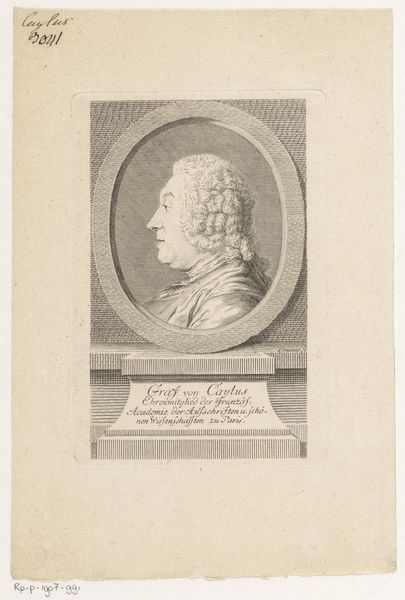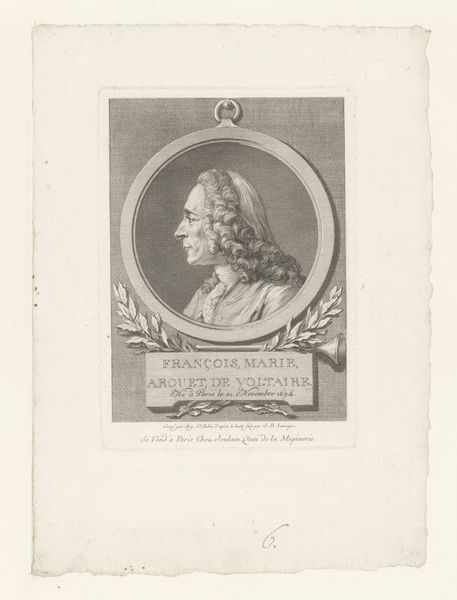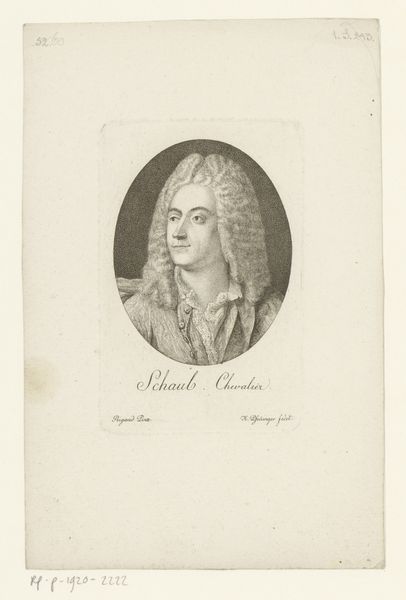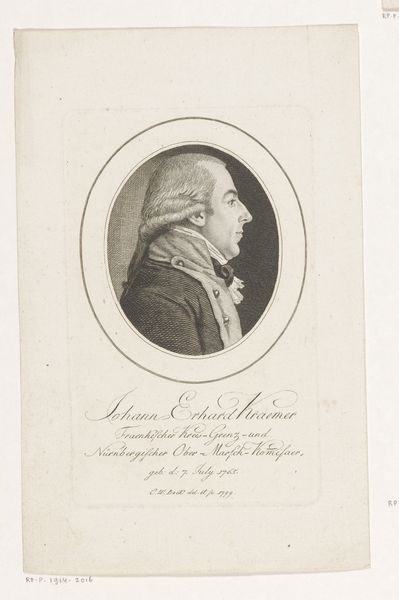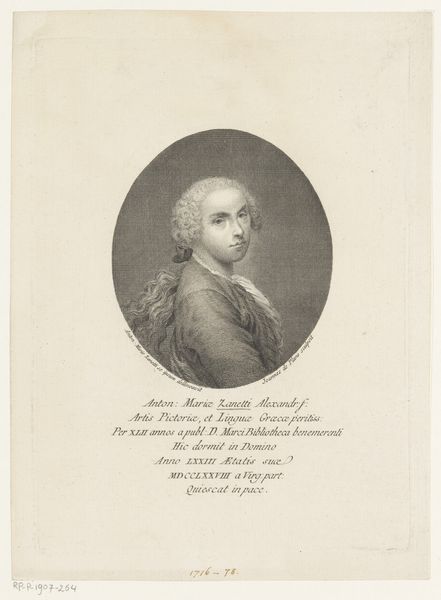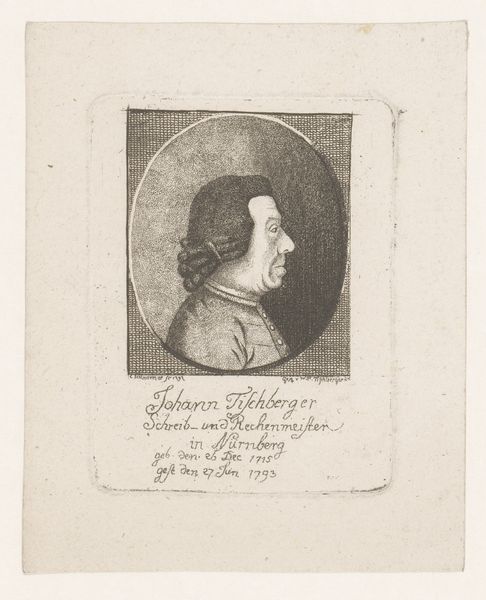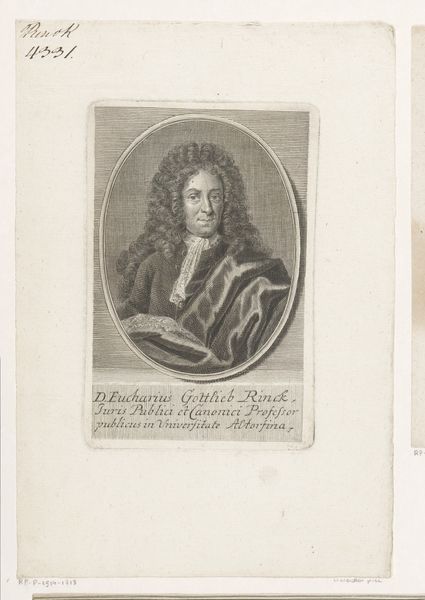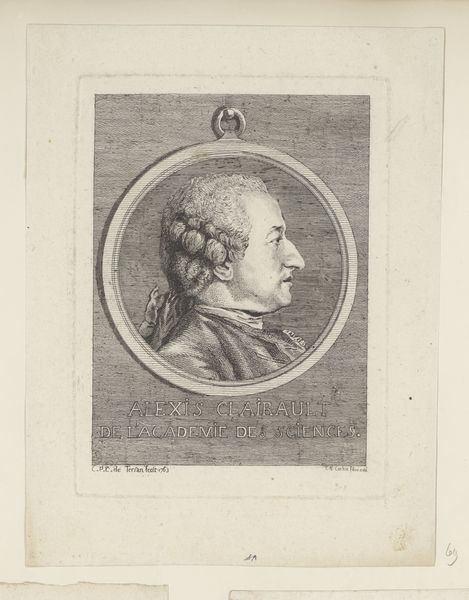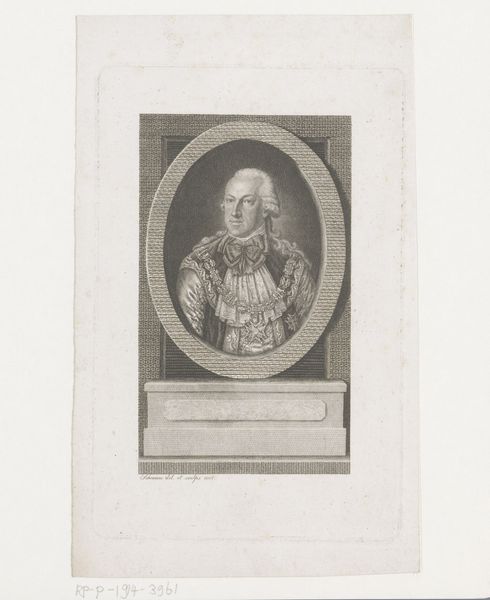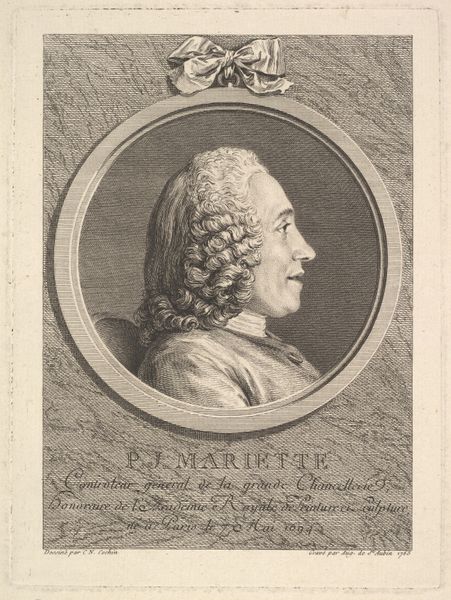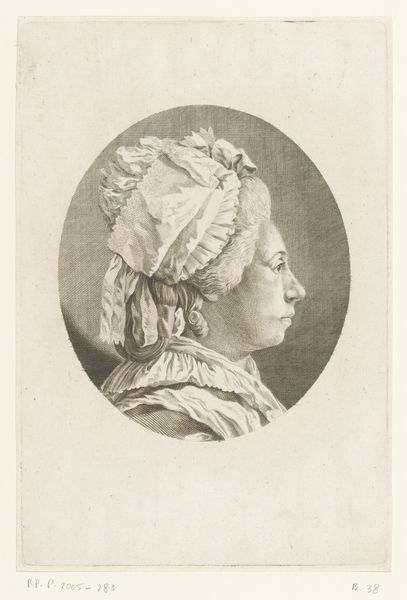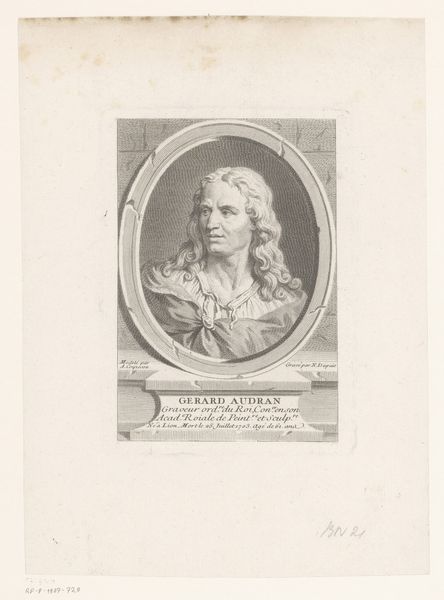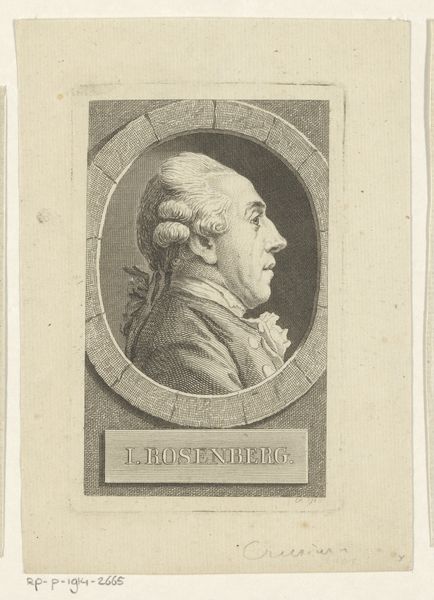
print, engraving
#
portrait
#
neoclacissism
# print
#
old engraving style
#
history-painting
#
engraving
Dimensions: height 178 mm, width 115 mm
Copyright: Rijks Museum: Open Domain
Curator: Here we have Eberhard Siegfried Henne's "Portret van Charles Pratt Camden," created in 1790. It resides here at the Rijksmuseum. Editor: The overwhelming first impression is the monochrome precision and the focus on texture; those incredibly fine lines creating the wig, the fur, and even the skin. It all appears so tactile despite being a print. Curator: Indeed. As a portrait, it tells us a lot about the sitter's status in society. Camden was Lord President of the Council; the wig and fur trimming were more than fashion, they signified power. This print allows the dissemination of that image, reinforcing his position. Editor: It's interesting to consider the labor involved. The printmaking process itself, especially back then, required immense skill and time. And beyond that, we should also recognize that there were makers involved in the very creation of Lord Camden’s fashionable accoutrements. Someone wove that fur; someone else fashioned the wig, probably out of human hair. It speaks to elaborate economic networks. Curator: Precisely. This image also aligns with Neoclassical ideals prevalent at the time. Look at the oval frame, a deliberate reference to classical cameos, elevating the sitter to a kind of timeless heroic status. Editor: That tight framing also traps him, doesn’t it? Almost like he’s an specimen. The deliberate control the artist is employing speaks volumes about hierarchies of production, knowledge, and control. The subject as specimen reflects broader control. Curator: But doesn’t it speak also about a celebration of individual achievement, typical of the Enlightenment period? This print provided access to a portrait gallery of leading figures. Editor: A curated gallery available at a fraction of the cost! Think about how a portrait like this, reproduced and distributed as a print, democratizes access while maintaining the established power structure. It’s a cunning interplay of materiality and social access. Curator: Very astute observation! It gives another point for understanding how portraits work. Editor: This has certainly shifted my perspective on the print's historical weight, highlighting material origins but it remains fascinating.
Comments
No comments
Be the first to comment and join the conversation on the ultimate creative platform.
